
In the vast realm of weaponry, where precision and finesse reign supreme, the throwing knife emerges as a captivating choice for those seeking liberation through skillful artistry.
As an instrument that transcends mere utility, selecting the perfect throwing knife becomes an intricate dance of purpose, weight, balance, blade design, and material.
With each element meticulously considered, this article aims to guide discerning enthusiasts towards a weapon that embodies their desired mastery, ensuring a seamless fusion of form and function.
Key Takeaways
- The purpose of the throwing knife should be considered, whether it is for recreational use, competitive throwing, or self-defense.
- Weight is an important factor to consider, both in terms of balance and personal preference.
- Balance plays a crucial role in the flight path and performance of the throwing knife, and it should be evenly distributed throughout the length of the knife.
- The blade design, including its shape, weight distribution, and edge configuration, should be carefully evaluated based on the intended use.
Determine Purpose
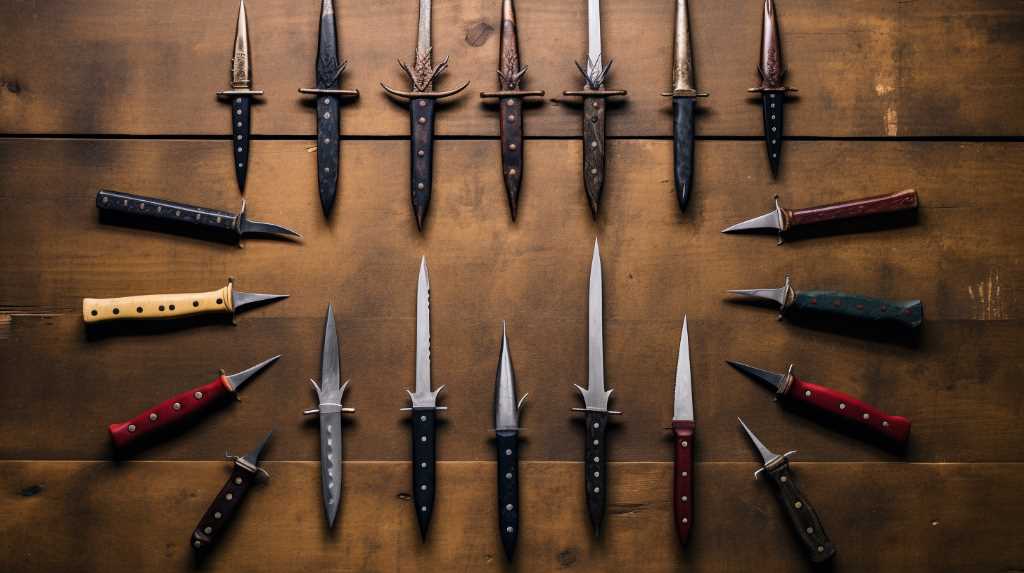
The determination of the purpose for selecting a throwing knife is crucial in making an informed decision. Whether it be for recreational use, competitive throwing, or self-defense, understanding the intended use will help guide the choice of knife.
For recreational use, a lightweight and balanced throwing knife may be preferred, allowing for easy handling and accurate throws.
In competitive throwing, a knife with a specific weight and balance may be required to meet the regulations set by the governing body.
For self-defense purposes, a throwing knife with a sturdy construction, sharp edge, and reliable grip is essential.
Consider Weight
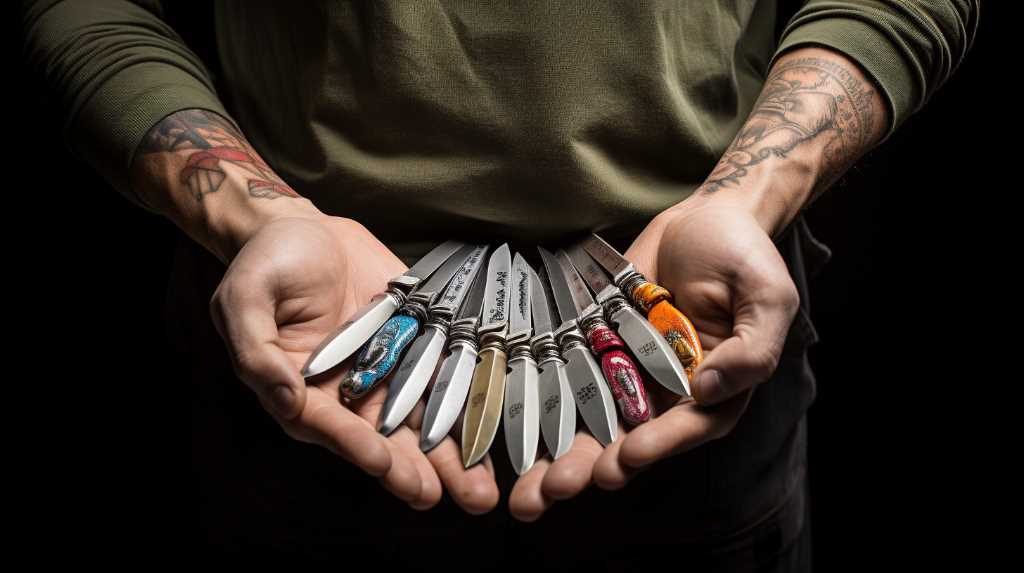
Carefully consider the weight, as well as other factors such as balance and material, when selecting a throwing knife. The weight of a throwing knife is crucial as it directly affects its flight and accuracy. Here are three key points to consider when evaluating the weight of a throwing knife:
- Balance: A well-balanced throwing knife ensures a smooth and accurate throw. The weight distribution should be evenly spread throughout the knife, allowing for a controlled rotation in the air.
- Knife Material: Different materials have varying weights. Steel throwing knives are commonly used due to their durability and balanced weight. However, lighter materials like carbon fiber or titanium can provide faster rotation, but may sacrifice durability.
- Personal Preference: It's essential to find a weight that suits your throwing style and strength. Experimenting with different weights will help you discover the ideal balance between control and power.
Assess Balance
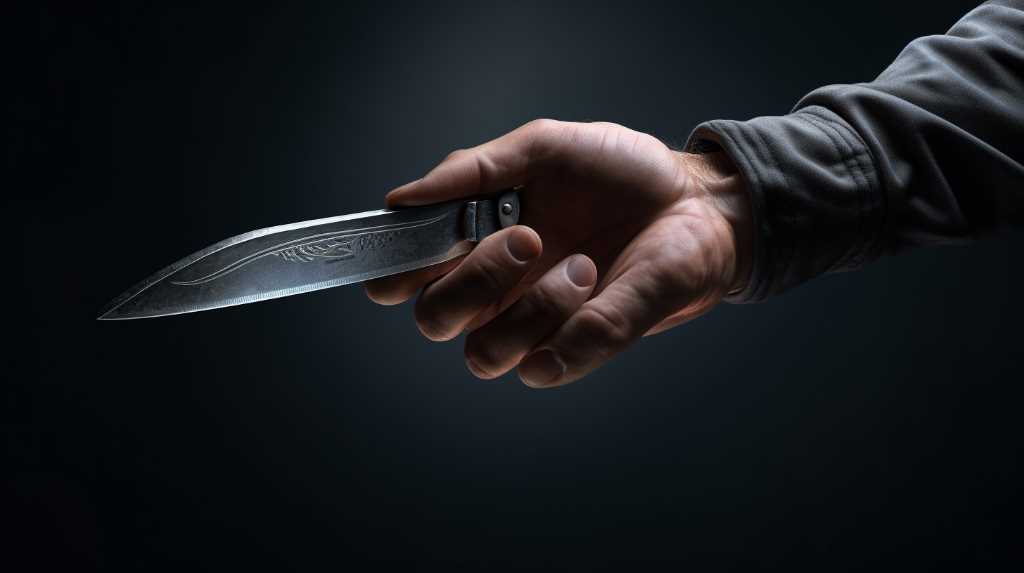
Achieving optimal accuracy in throwing knives requires assessing balance and considering other factors such as weight and material.
Balance is a crucial aspect when selecting a throwing knife, as it directly affects its flight path and overall performance. A well-balanced knife will rotate evenly during flight, allowing for consistent and accurate throws. One way to assess balance is by holding the knife at the handle and checking if it rests evenly in the hand.
Additionally, the weight distribution should be considered, with a balanced knife having its weight evenly distributed throughout its length. This ensures a smooth release and enhances accuracy.
Furthermore, the material of the knife can impact its balance, with lighter materials allowing for better control and precision.
Evaluate Blade Design
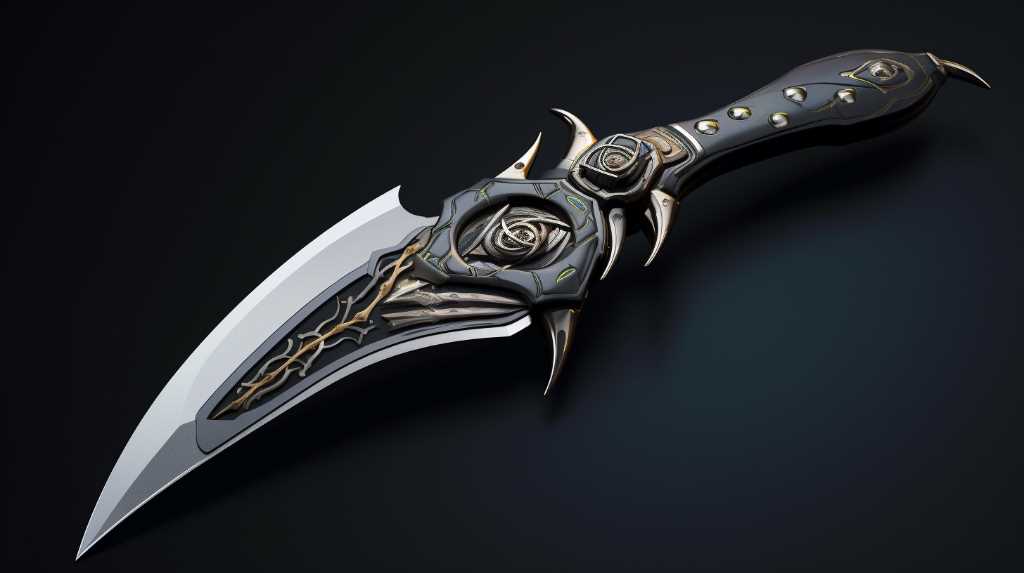
Effectively evaluating blade design is crucial for selecting a throwing knife that optimizes accuracy and enhances performance. The design of the blade plays a significant role in determining the knife's flight trajectory, stability, and penetration power.
Here are three key factors to consider when evaluating blade design:
- Shape: The shape of the blade affects its aerodynamics and stability during flight. A well-designed throwing knife should have a balanced shape that minimizes air resistance and ensures a straight and accurate throw.
- Weight distribution: The distribution of weight along the blade affects its rotation and stability in the air. A throwing knife with a balanced weight distribution allows for better control and precision.
- Edge configuration: The type of edge, such as a straight or serrated edge, can impact the knife's cutting ability and penetration power. It is important to choose a blade with an edge configuration that suits your intended use.
Choose Material
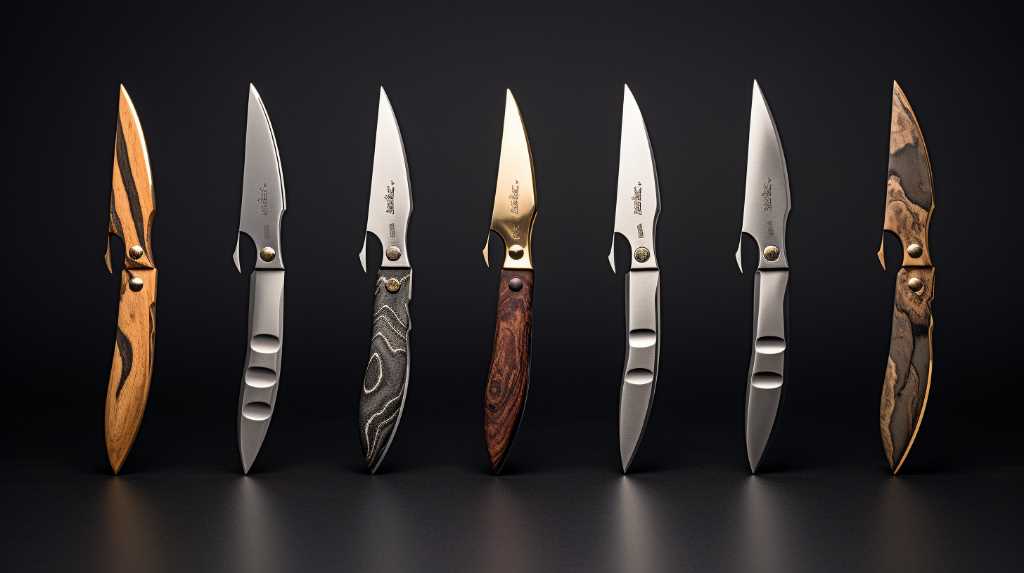
The choice of material, such as stainless steel or carbon steel, and the proper weight distribution are key considerations when selecting a throwing knife.
The material used in the construction of the blade greatly affects its performance and durability. Stainless steel is known for its resistance to corrosion and is a popular choice for throwing knives due to its ability to withstand the elements. On the other hand, carbon steel is known for its exceptional strength and edge retention, making it ideal for heavy-duty throwing.
Weight distribution is also crucial as it determines the knife's balance and flight characteristics. A well-balanced throwing knife ensures better accuracy and control, allowing for consistent and reliable throws.
Therefore, when selecting a throwing knife, it is essential to carefully consider the material and weight distribution to ensure optimal performance and success in your throwing endeavors.
Frequently Asked Questions
How Do I Properly Grip a Throwing Knife?
Properly gripping a throwing knife is crucial for accuracy and control. It involves holding the handle firmly but not too tightly, with the blade pointing towards the target and the index finger acting as a guide.
What Factors Should I Consider When Choosing a Throwing Knife for Competition?
When selecting a throwing knife for competition, one must consider factors such as weight, balance, length, material, and design. These elements play a crucial role in determining the knife's accuracy, speed, and overall performance in competitive throwing events.
Are There Any Specific Techniques or Throwing Styles That Work Best With Certain Throwing Knives?
Certain throwing knives can complement specific techniques and throwing styles. Understanding the design, weight distribution, and balance of a knife is crucial for achieving optimal performance. Expertise in different styles can enhance accuracy and precision in throwing techniques.
Can Throwing Knives Be Used for Any Other Purposes Besides Throwing?
Throwing knives can indeed be used for purposes other than throwing. They can serve as a versatile tool in survival situations, such as cutting ropes or creating makeshift tools. However, it is essential to handle them with caution and proper training.
What Are the Most Common Mistakes Beginners Make When Choosing a Throwing Knife?
When selecting a throwing knife, beginners often make common mistakes that can affect their throwing accuracy and safety. These include choosing the wrong weight, length, or balance, neglecting proper materials and construction, and disregarding personal preferences and skill level.
Conclusion
In conclusion, selecting the right throwing knife requires a careful consideration of various factors.
Purpose, weight, balance, blade design, and material all play a crucial role in determining the effectiveness of the knife.
By analyzing these aspects with precision and attention to detail, one can make an informed decision.
The juxtaposition of these elements adds depth and complexity to the process, highlighting the importance of finding the perfect throwing knife for the intended purpose.

